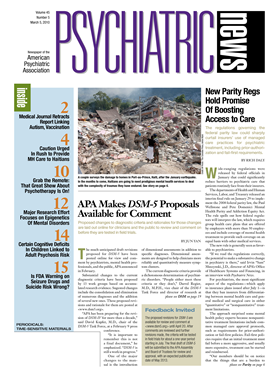A recent report by the Government Accountability Office (GAO) found that more than 300 brand-name drugs at least doubled in price from 2000 to 2008 and attributed these “extraordinary” price increases to a lack of alternative medication therapies for many conditions and to limited competition.
A majority of the products with a price increase of 100 percent or more at one time fell into three therapeutic classes: central nervous system, anti-infective, and cardiovascular agents. Among the 126 central nervous system drugs cited in the report were approximately 20 medications commonly prescribed for psychiatric illnesses, including Abilify, Adderall, Ambien, Aricept, Effexor, Lamictal, Lunesta, Lyrica, Prozac, Paxil, Risperdal, Seroquel, Topamax, and Zyprexa. Many of these products have generic equivalents.
During the nine years, 321 drugs, or a total of 416 products if different dosages or versions were counted separately, experienced an extraordinary price increase, the GAO reported. The number represented 0.5 percent of all brand-name drugs on the market. The magnitude of a price jump was generally one to five times higher than the original price, but a few products had price increases that were at least 10-fold.
In 2000 and 2001, 28 and 27 products, respectively, had what the GAO termed an “extraordinary” price increase. By 2008, the number had skyrocketed to more than 70 products.
About half of these extraordinary price increases were traced to companies that repackaged bulk products into smaller packages to sell to hospitals or physicians. These price increases were generally not set by the drugs' manufacturers.
A lack of alternatives, such as generics and other brand-name drugs in the same class, and limited competition were the main reasons for these extraordinary increases, GAO auditors concluded after interviewing experts and industry representatives. Corporate mergers and frequent transfers of drug rights among manufacturers probably contributed to the declining competition in the marketplace, the report noted. Patent protection and market-exclusivity rights can limit therapeutic alternatives, especially in the area of rare diseases, according to the report.
The report pointed out that the market forces influencing pharmaceutical and health care products are very different from the mechanisms at work in other types of consumer goods. If the price of a car goes up, consumers may flock to a different brand with a lower price. However, consumers of prescription drugs usually rely on prescribers to make their purchasing decisions for them, and people with insurance coverage for prescription drugs are often not aware of or directly affected by price changes.
The pharmaceutical industry disputes the report. In a statement released on January 11, the Pharmaceutical Research and Manufacturers of America (PhRMA) said the GAO report was misleading. PhRMA Senior Vice President Ken Johnson pointed out that the report “focuses only on a small number of selected brand medicines rather than the entire prescription market.” He said that retail sales of brand-name prescription drugs grew at a much slower pace in 2008 than in previous years. He emphasized that market factors such as high research and development costs, risk of failed investigational products, and patent expirations have driven up the prices of brand-name drugs.
The GAO report “Brand-Name Prescription Drug Pricing: Lack of Therapeutically Equivalent Drugs and Limited Competition May Contribute to Extraordinary Price Increases” is posted at <www.gao.gov/new.items/d10201.pdf>. 
